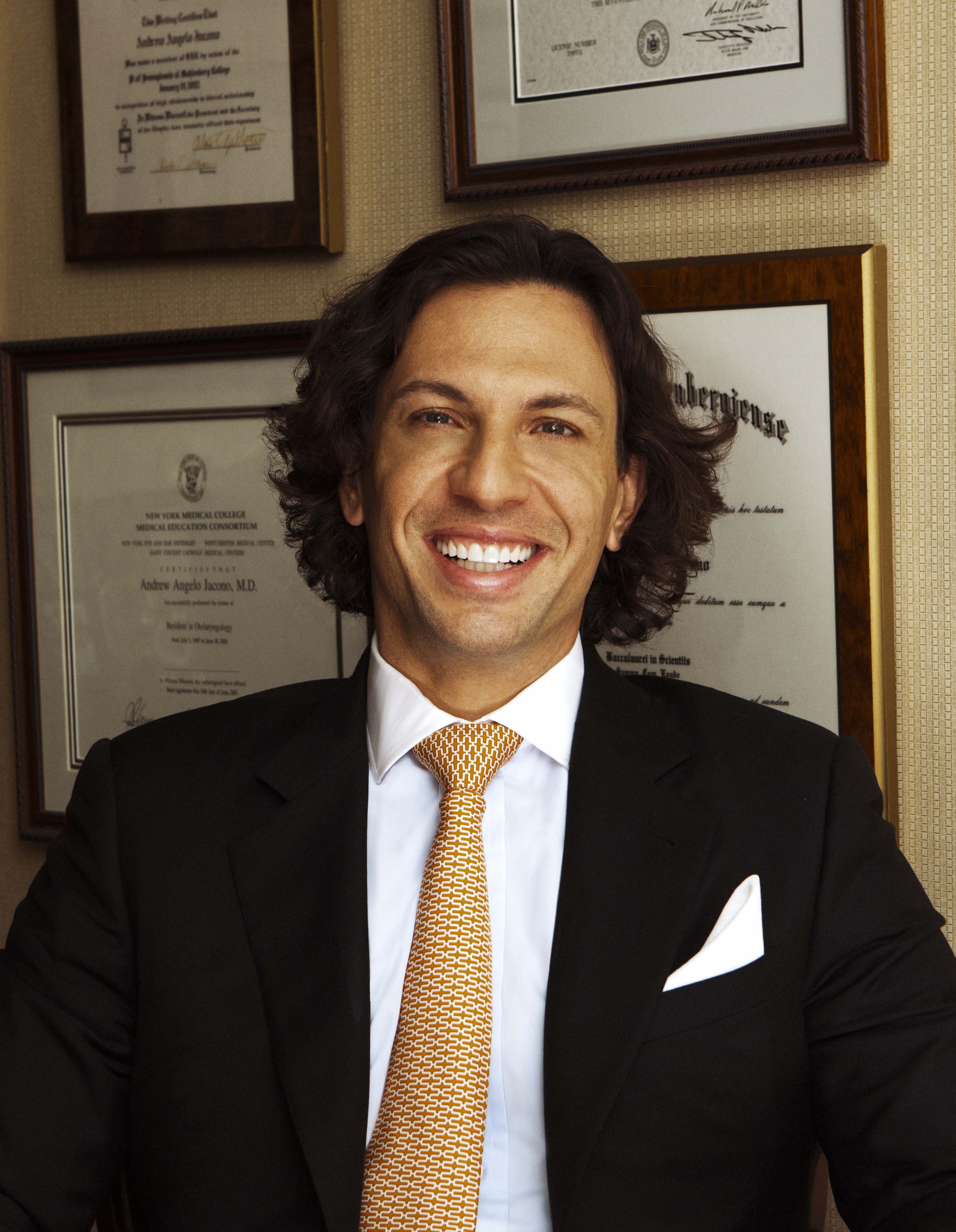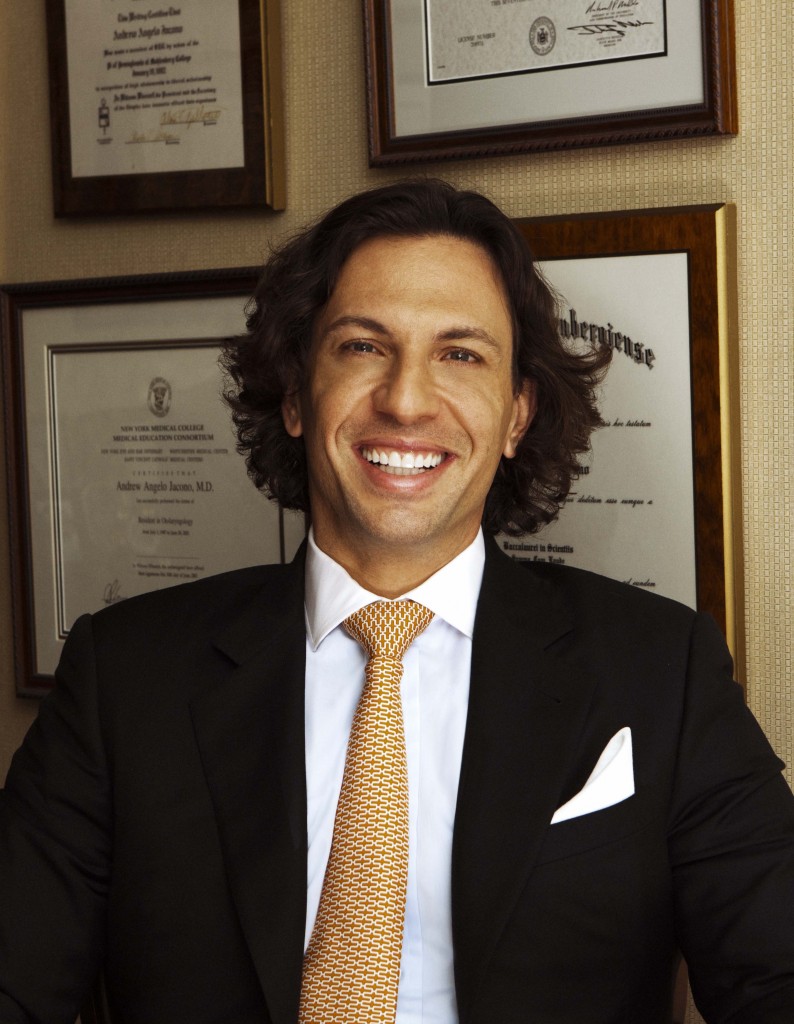An expert surgeon, dedicated professor, involved philanthropist, influential author, and proud father of four, Dr. Andrew Jacono has only just begun. Featured in The New York Times as one of New York City’s chief plastic surgeons, Dr. Jacono strives to enhance the natural beauty of his clients by using less invasive techniques.
Jennifer Liedke: You have quite a list of credentials. What is your commitment to education within your field?
Andrew JacoNo: In my field, education is the key to the future. I am an assistant clinical professor in the facial plastic and reconstructive surgery division at The New York Eye and Ear Infirmary and Albert Einstein College of Medicine. I am also one of only 37 U.S. advanced facial plastic surgery fellowship training directors for the American Academy of Facial Plastic and Reconstructive Surgery. As a result, not only am I constantly striving to perfect the newest and most innovative techniques for my patients, but I also strive to impart my knowledge to future generations.
JL: What is your specialty?
AJ: I specialize in minimally invasive procedures for facial aging, including 3-D telescopic incision facelifts, eyelid lifts, and laser resurfacing. I also perform many rhinoplasties as well as cheek, chin, and lip reshaping.
JL: What do you find most challenging about your profession?
AJ: The most challenging thing about being a facial plastic surgeon is striving to develop new, less invasive techniques while continuing to create natural, beautiful results. This means constantly evolving the surgeries of the past, many of which, unfortunately, have left some patients looking altered and fake.
JL: Is there one surgery that sticks out in your memory as having shaped you into the surgeon you are today?
AJ: I’ll never forget when I operated on a 23-year-old who suffered facial burns as a child. I reconstructed her eyelids, nose, lips, and face using complicated flap surgery, tissue expanders, and rib-grafting. Being adept with these techniques makes you into a superior cosmetic surgeon. If you can make a face out of nothing, you can make a normal face beautiful.
JL: Many people may be discouraged from plastic surgery because of presumed pain and recovery time. How has the healing process evolved?
AJ: The techniques used today are less traumatic, involve essentially a third of the incisions, and do not overstretch the facial tissues. As a result, healing time is cut in half. In addition, I have developed my own line of homeopathic healing products, called J-Pak Systems, which further reduce healing times by another 50 percent.
JL: Are there any new techniques you recommend?
AJ: I have developed a minimal-access facelift procedure called the M.A.D.E. Vertical Facelift. It creates natural and not tight-looking results by using incision lines that are hidden and are a third of the length of traditional facelift incisions. For those not ready for surgery, we recommend Ultherapy, which is non-surgical facial tightening using micro-focused ultrasound. This treatment has no recovery time.
JL: As an active philanthropist, could you tell us about one of your volunteer programs?
AJ: I am the senior advisor to Face To Face, a national project offering pro bono consultations and surgery to victims of domestic violence. These women are often frightened and ashamed to seek help. Through this organization, I have operated on more than 100 women, restoring not only their faces, but also their confidence.
JL: What is the source of your inspiration?
AJ: I love nature, and I find great inspiration in the natural beauty found outdoors. I surf and travel to remote parts of the world, finding beauty wherever I go. In fact, I am climbing Mount Kilimanjaro with my son this month.
JL: Can you tell us about your latest book, “The Face of the Future”?
AJ: The subtitle of the book is “Look Natural, Not Plastic.” I am on a crusade to help patients understand the reasons that people sometimes look overdone and how to avoid this result. I apply aesthetic ideals of the Renaissance artists in my techniques, both for surgeries and even for injectable treatments. And I have plans for publishing a book on the psychology of plastic surgery.
Manhattan: 990 Fifth Ave. (at 80th Street) 212.570.2500
Great Neck: 440 Northern Blvd. 516.773.4646
newyorkfacialplasticsurgery.com



